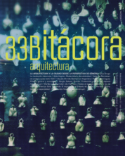Feminism is an episteme: a theoretical model that explains reality or a line of thought that allows for other possibilities of interpretation of the world in which we live in. It emerges from the indisputable base that we live within a heteronormative patriarchy ingrained in culture and that all human beings constantly perpetuate through our everyday behavior. In this issue of Bitácora, we have tried to show different ways of understanding architecture and the city from the gender perspective that includes other approaches besides that of feminism.
There are different ways of understanding gender in relationship to architecture and design but the most com-mon one is that which tries to repair the damage and give the necessary acknowledgement to the historical contributions of women. Independently of our sexual identity, it is shocking that many important women of our disciplines go unmentioned; simply omitted or overshadowed by the figure of an important architect or designer. The intent on fixing these errors has resulted in a reading intended to give justice to these women yet sometimes has ended victimizing these individuals instead of seeing them as who they really were: significant characters who played a role in the development of modern architectural culture.
The historical interpretation from a gender perspective has led to the inclusion of issues such as sexuality, control, and the relationship between body and space as part of the designers’ intentions. These current interpretations have given us better opportunities to get closer to our object of study, to reveal new angles ignored before in other interpretations that only consider technical, programmatic or scientific approaches have done and for this reason do not accomplish to provide the necessary explanations or open possibilities to deepen and expand the analysis. Many histories await for a more inclusive study and, as a result, we have to safeguard the archival material for future research.
DOI: https://doi.org/10.22201/fa.14058901p.2016.33
Published: 2016-11-16

